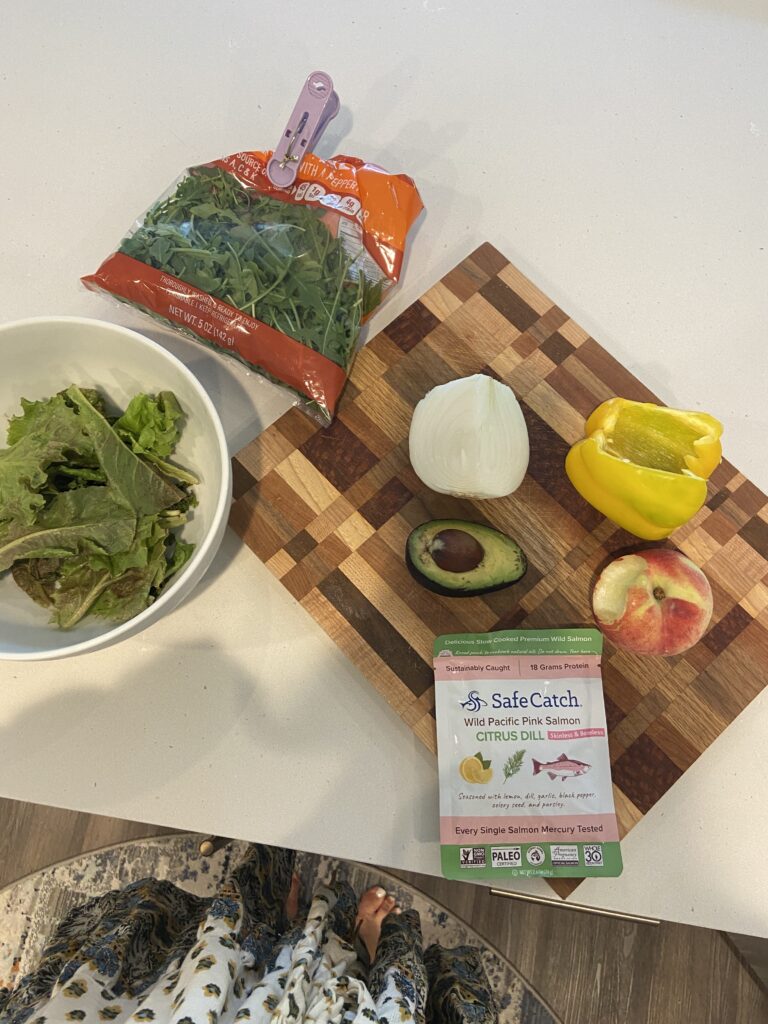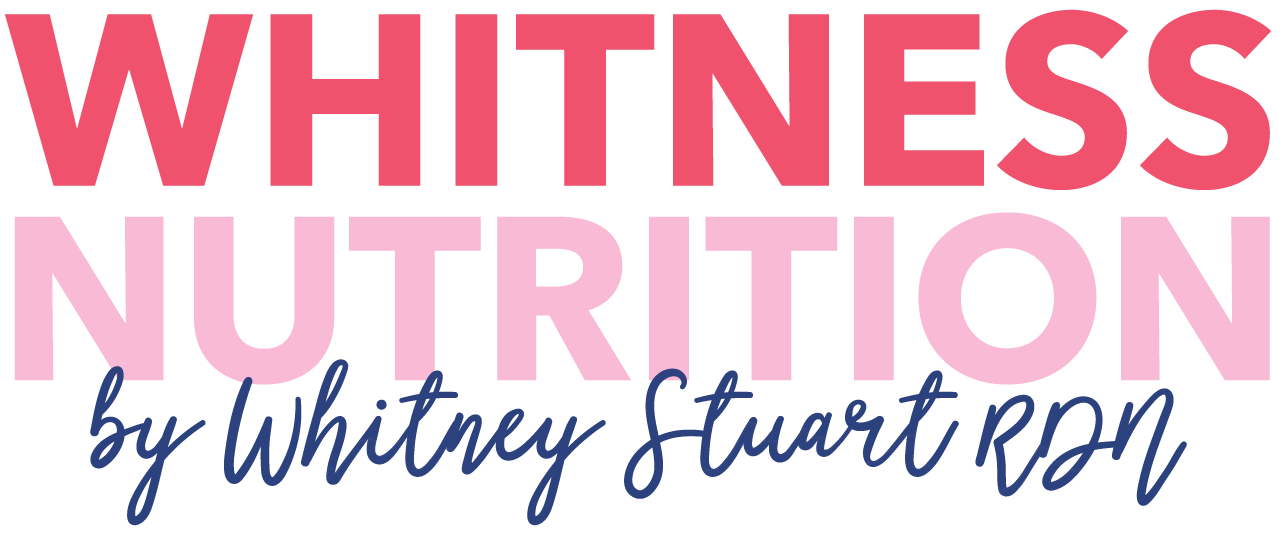Three Ways to Add Heart Healthy Fats to Your Plate
In honor of February being American Heart Health Month, today’s blog is on three easy ways you can add more heart healthy foods into your diet in partnership with Safe Catch! Food as medicine is a large part of my private practice focus and this seems timely to share this resource with the recent increase in cardiovascular disease in America.
Let’s begin with a staggering fact; 1 in every 3 deaths in the United States is related to cardiovascular disease. What if there was a greater intention on the education of disease prevention, all starting with a large focus on the healthful foods that can reduce the risk of the primary contributors of heart disease; obesity, hypertension, insulin resistance, and elevated cholesterol? We could prevent all of these unwanted deaths through early intervention and lifestyle changes!
Use these specific swaps and additions to reduce the risk of cardiovascular disease!
First, add Healthy Fats
First, prioritize consuming these two types of fats in your diet; monounsaturated fats and polyunsaturated fats. Both of these unsaturated fats increase your cardioprotective HDL cholesterol. A high HDL cholesterol count, which a medical professional can determine through blood work, correlates with a decreased risk of stroke, heart attacks and other forms of heart disease. Therefore, increasing our intake of various monounsaturated fats and polyunsaturated fats is essential to optimal heart health.
MUFA’S
Monounsaturated fats, or MUFA’s, are more readily available in the American diet than PUFAs. This is because they’re predominantly found in plants! Good sources of MUFA’s to incorporate include:
- Olive oil
- Avocado
- Avocado oil
- 100% Natural Peanut Butter
- Raw, whole nuts
PUFAs
Polyunsaturated fats, or PUFAs constitute our beloved omega 3 fatty acids. Omega 3’s have been shown to support brain, heart and eye health. A diet rich in Omega 3 fatty acids has been shown to prevent cognitive decline, support fetal development and fight inflammation. Both Omega 3 and Omega 6 are essential fats that can’t be produced by the body and must be obtained through our diet. But, because Omega 6 fatty acids are omnipresent in the American diet, with seed oils being one of the highest sources, we put a greater emphasis on Omega 3 fatty acids to reduce inflammation and even out the ratio.
Actually, research has shown that a higher consumption of omega 6 fatty acids contributes to inflammation, and increases ones risk of heart disease. But, with products like Safe Catch cans and pouches, increasing your Omega-3 intake has never been easier!
Consuming foods high in omega 3 fatty acids is one of the easiest ways to support your heart health. Not only do they contain a myriad of anti-inflammatory benefits, they also support brain, eye and bone health. As always, food as medicine always trumps the pill form. I encourage the consumption of these nutrients through diet instead of your Omega-3 supplement.
Second, eat Omega-3 Rich Fish!

The best types of fish to consume to increase your Omega-3 intake include: Salmon, mackerel, tuna, and sardines – yes, even those little sardines are jam-packed with omegas!
The best ways to eat fish:
As you might imagine, this doesn’t en-tail breaded and deep-fried options. Instead, choose fish that is grilled, baked, broiled or seared. Even sashimi style or on a poke bowl better retain optimal levels of omega 3’s then the fried options! Don’t get hung up on filet style fish either! A can or pouch version work too!
Easy ways to add Omega-3 rich fish into your diet:
- First, sprinkle sardines on your pizza or avocado toast.
- Second, go ahead and meal prep tuna patties for an easy lunch option.
- Third, whip up a salmon salad to add to your bento box with crackers.
- Fourth, add chopped mackerel to your veggie stir fry.
My favorite way to get my weekly source of omega-3 fatty acids is by whipping up a quick, nutrient-dense salmon (or tuna!) salad. I can simply pair with veggies and seed crackers for an easy lunch. A single pouch of Safe Catch salmon has 21g of protein, 4.5g of fat and no added sugar and keeps my blood sugar balanced. Keep scrolling to get the Whitness Nutrition recipe! 
How often you should eat this fish to meet your needs:
The American Heart Association recommends eating two-three servings of fatty-fish per week. This is to help reduce your risk of heart disease. Incorporate a high quality source and look for the words “wild-caught” and “mercury tested” on the label. Safe Catch is one of the only brands on the market that uses sustainable sourcing methods to pack and provide wild-caught, omega 3 fatty fish.
Why should I prioritize wild-caught fish?
Unlike conventional farm-raised fish that are fed grain-based low-nutrient feed, the diet of wild-caught fatty fish results contains higher levels of omega 3 fatty acids per serving. Additionally, the wild-caught fish tend to be leaner and retain more nutrients during processing. Look for the term “wild” on your package, and even better, look for the term “sustainably caught.” Safe Catch products are always sourced from the wild and caught in a sustainable method. They also test every single fish that comes in for mercury levels, and only provide the highest quality and most nutrient-dense fish to consumers. The sustainable practices of Safe Catch provide some of the most nutrient-dense fish on the market, and it’s all SO convenient!
Third, make heart healthy swaps in your diet
While fatty-fish is excellent, it’s not the only way you can increase your intake of omega 3 fatty acids. Consider these additional swaps:
- Swap out any of the soybean or seed oils for a heart healthy alternative such as extra virgin olive oil or flaxseed oil. This is especially simple when it comes to salad dressing, as many on the market are made with a base of vegetable oil. Make your own dressing at home and use olive oil instead. this recipe is one my favorites!
- Swap out your croutons for crunchy, heart-healthy walnuts. Walnuts are high in omega 3’s, specifically alpha-linolenic acid (ALA). There are three main omega-3 fatty acids: ALA, EPA and DHA. EPA and DHA are found in fatty fish, but don’t contain high quantities of ALA. Eating walnuts, as well as flaxseed, are a great way to balance out your intake of polyunsaturated fats. You can simply snack on them or make a fiber-filled DIY trail mix!
Increasing your dietary intake of omega 3’s doesn’t need to be complicated nor does it need to be daunting. In fact, all you need to do is stock up on Safe Catch and add their pure fatty fish to your favorite meals. Whether it’s a sandwich, a salad or just straight out of the pouch, adding Safe Catch to your routine will support your heart health. 
Whitney’s Favorite Salmon Salad – it’s safe for my pregnant ladies too!
Ingredients:
- 1 can of Safe Catch Wild Caught Salmon (or tuna!)
- ½ mashed avocado or 2 tbsp avocado-oil based mayo
- 3 tbsp finely chopped onion or herbs
- A squeeze of lemon
- Salt, pepper and a touch of garlic powder.
Instructions:
- Add everything to a bowl and gently toss until everything is well combined.
- Pair with your favorite crunchy veggies like celery stick, cucumber rounds or carrots.
Want to learn more about how to optimize your diet and how to increase your intake of Omega 3’s? Book a discovery call today! Next time you’re grocery shopping, add Safe Catch Tuna to your grocery basket. In the name of heart health, here’s to fatty fish!
This blog post was sponsored by Safe Catch through the creation of a thoughtful partnership with the intention of educating the masses on wholesome health concepts. Whitness Nutrition takes every partnership seriously and Whitney upholds her role of a #honestinfluencer to a high standard. Never hesitate to reach out with comments, questions, or concerns.







